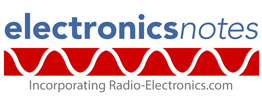Home » Component data » MOSFET data » this page
NX5020UNBK 50V N-Channel Trench MOSFET
Data for the NX5020UNBK MOSFET including electrical parameters, maximum current and voltage, pin connections, package type and many other datasheet details.
The NX5020UNBK is an N-channel enhancement mode Field-Effect Transistor (FET) in a small SOT23 SMD plastic package.
the device uses Trench MOSFET technology to provide a low threshold voltage and very fast switching.
Key details and performance parameters for the NX5020UNBK MOSFET.
| NX5020UNBK MOSFET datasheet parameters & data |
|
|---|---|
| Parameters | Details |
| Brief description | 50 V, N-channel Trench MOSFET |
| Package type | SOT23 |
| Operational mode | Enhancement |
| Channel type | N-channel |
| Drain to Source voltage VDSS | 50V |
| Gate to source voltage VGSS | -20V to +20V |
| Maximum drain current continuous ID | 330mA with VGS = 1-V at 25°C |
| Zero gate voltage drain current IDSS | 1µA for VDS = 50V, VGS = 0V at 25°C |
| Gate threshold voltage VGS(th) | 0.5V min, 0.7V typ, 0.95V max for ID = 250µA VGS = 0V at 25°C |
| Static drain source ON resistance RDS(ON) | 1.3Ω typ, 1.8Ω max for VGS = 10V, ID = 330mA at 25°C |
| Forward transconductance gFS | 0.8 typ |
| Input capacitance | 20.5pF typ |
| Output capacitance | 3.3pF typ |
| Reverse transfer capacitance | 2.1pF typ |
| TJ °C | 150 |
| PTOT mW | 310mW |
| Primary manufacturer | Nexperia |
Outlines & pinout:
Explanation of MOSFET parameters
| Parameter | Explanation |
|---|---|
| Operational mode | This details whether the FET is an enhancement or depletion mode |
| Channel type | The channel of the MOSFET can either be an N-type channel where electrons are the majority carriers or P-type where holes are the majority current carrier. |
| Drain to Source voltage VDSS | This is the maximum voltage that can be sustained between the drain and source |
| Gate to source voltage VGSS | This is the maximum voltage that can be sustained between the drain and the gate. |
| Maximum drain current continuous ID | This is the maximum current that can be carried byt he device. Sometimes there may be a differentiation between the continuous and pulsed or peak values |
| Parameter | Explanation |
|---|---|
| Zero gate voltage drain current IDSS | This is the current carried by the device when the gate voltage is zero. The test conditions are normally stated for this. |
| Gate threshold voltage VGS(th) | This is the minimum gate-to-source voltage, VGS required to create a conductive channel between the source and drain terminals |
| Static drain source ON resistance RDS(ON) | This is the resistance of the device when turned on. The test conditions of voltage and current are normally given for this. |
| Drain source ON voltage VDS(ON) | This is the voltage across the device when it is turned on. Again the test conditions are given. |
| Forward transconductance gFS | Forward transconductance also given the letters gm is defined as the change in drain current (ΔID) for a small change in the gate-source voltage ΔVGS, with the drain-source voltage, VDS held constant. |
These are the main MOSFET parameters that have been included in our list. There are others, but these are the main ones and they help quantify the main elements of the performance.
Please note, that the data given is the best estimate we can give within a tabulated summary of this nature. Parameters also vary between manufacturers. Electronics Notes cannot accept any responsibility for errors, inaccuracies, etc, although we do endevaour to ensure the data is as accurate as possible.
Notes and supplementary information
• Availability & sources
The NX5020UNBK is available from a number of stockists and electronic component distributors many of which are given in the table below.
NX5020UNBK Component Distributor, Stock and Pricing
• Further details
The device can be used for many general purpose applications but it is ideally suited for relay driver circuits, high-speed line driver circuits, low-side load switching, and many general switching circuits.  Written by Ian Poole .
Written by Ian Poole .
Experienced electronics engineer and author.
Return to Component Data menu . . .





